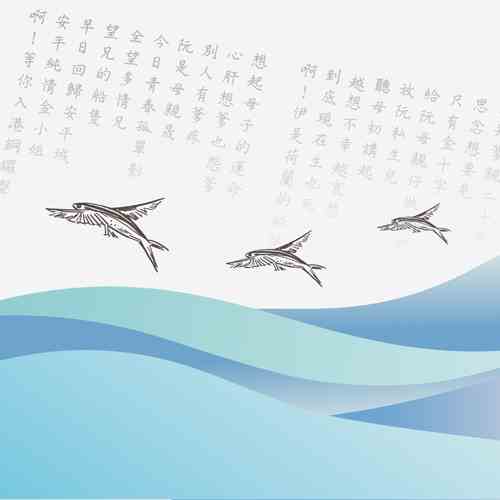The Age of Sailing|The Experience of Taiwan Strait|The Imprisoned Coastline
The Age of Sailing
Because of international trade and sea transportation, Taiwan was prized by various countries around the world in the 17th century. In particular, Anping, along the coast of modern-day Tainan, became an important trading hub for the Dutch East India Company. This period not only marked the beginning of Taiwan's international trade but also made the island part of global maritime history.
⚓︎ TAIJIANG Cultural Confluence, Witness to History|The Siraya, the Han, the Japanese, and the Dutch all interacted in the Taijiang area during the 16th and 17th centuries. This film depicts the time when Ming Dynasty loyalist Koxinga waged war on the Dutch at Taijiang, based on the memories of Mammu Tarie, a Siraya elder of the Madou tribe. (Lent by Taijiang National Park, 2013)
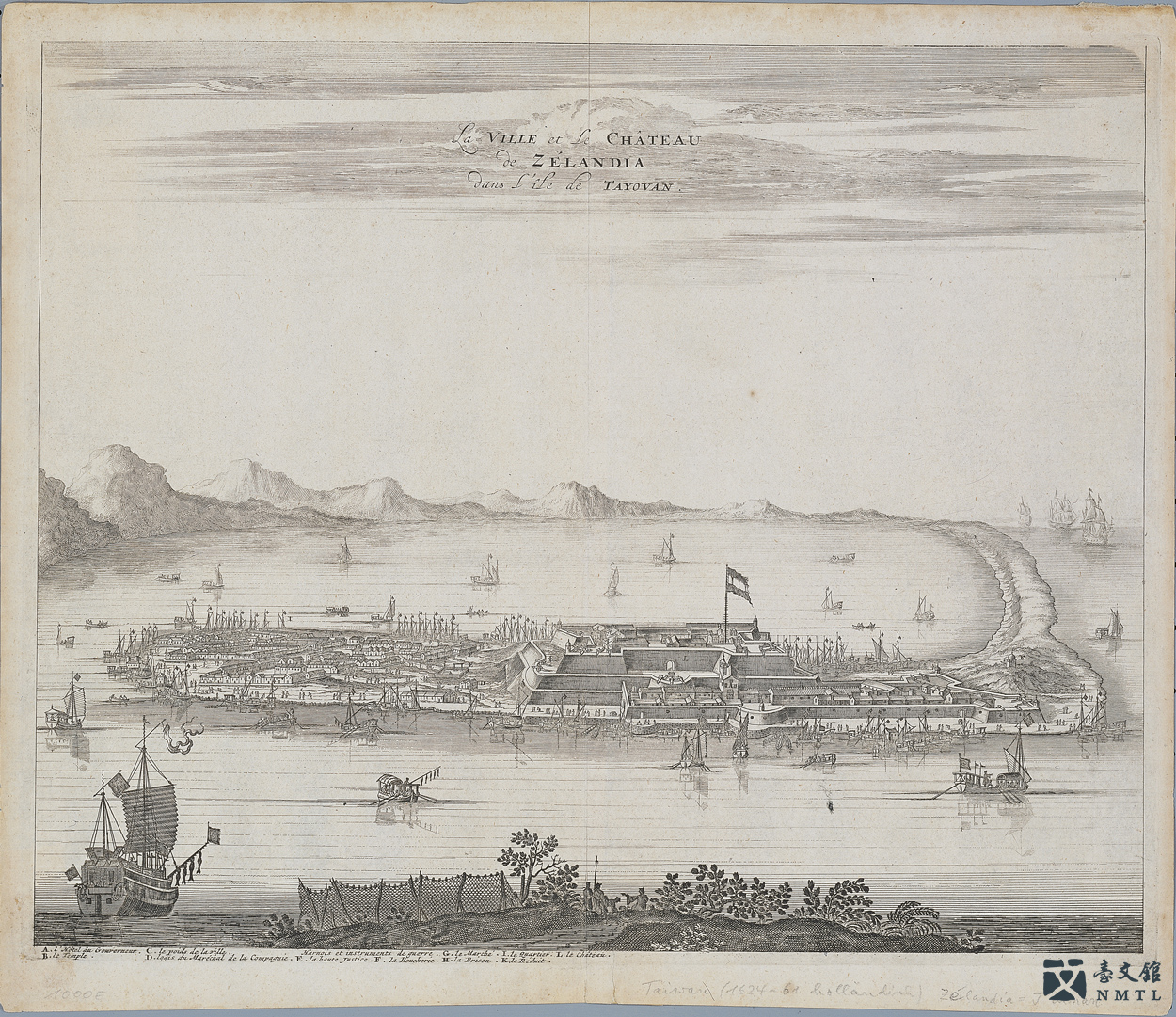
⚓︎ Map of Fort Zeelandia and the City|This map is an illustration from the book DUTCH EAST INDIA COMPANY'S SECOND AND THIRD VISITS TO THE QING EMPIRE, published in 1670, in Amsterdam, Netherlands. The map illustrates Fort Zeelandia, Seven Khun-sin, and the Taijiang Inner Sea. (Lent by the National Museum of Taiwan History)
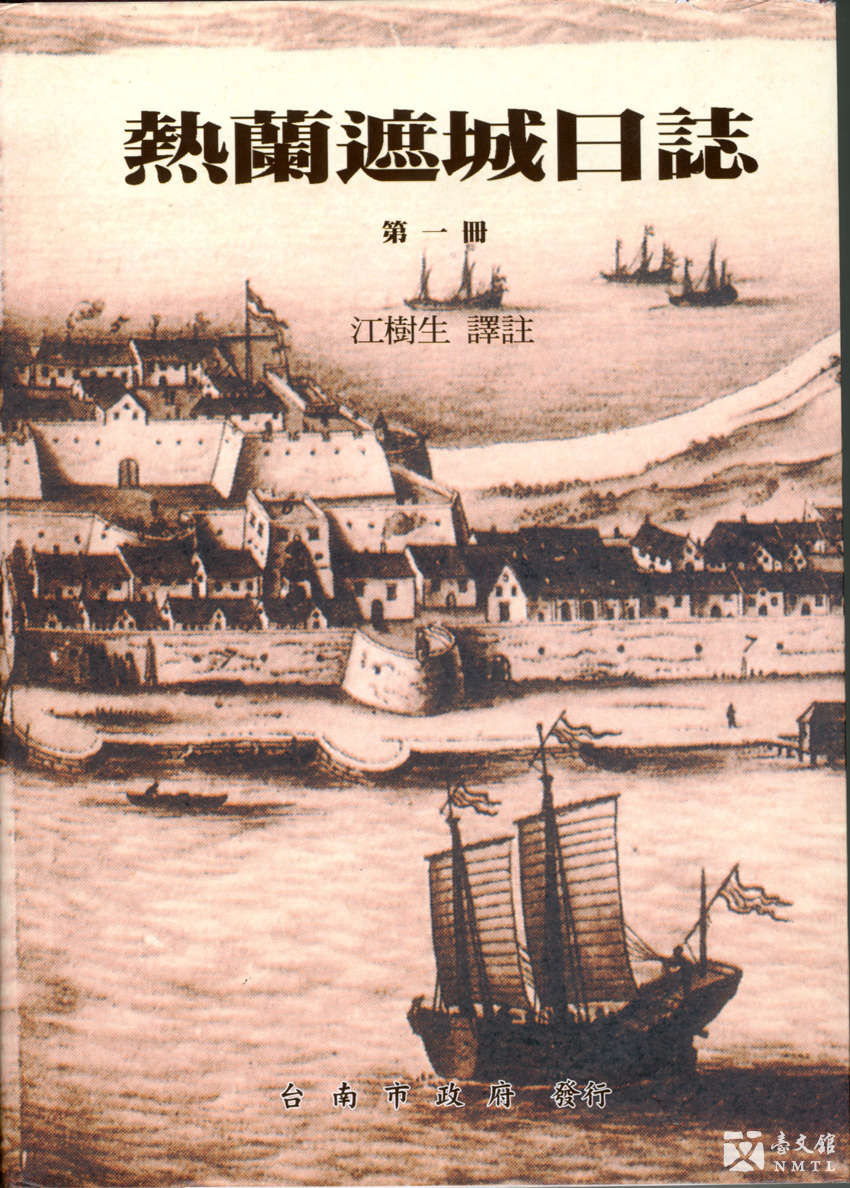
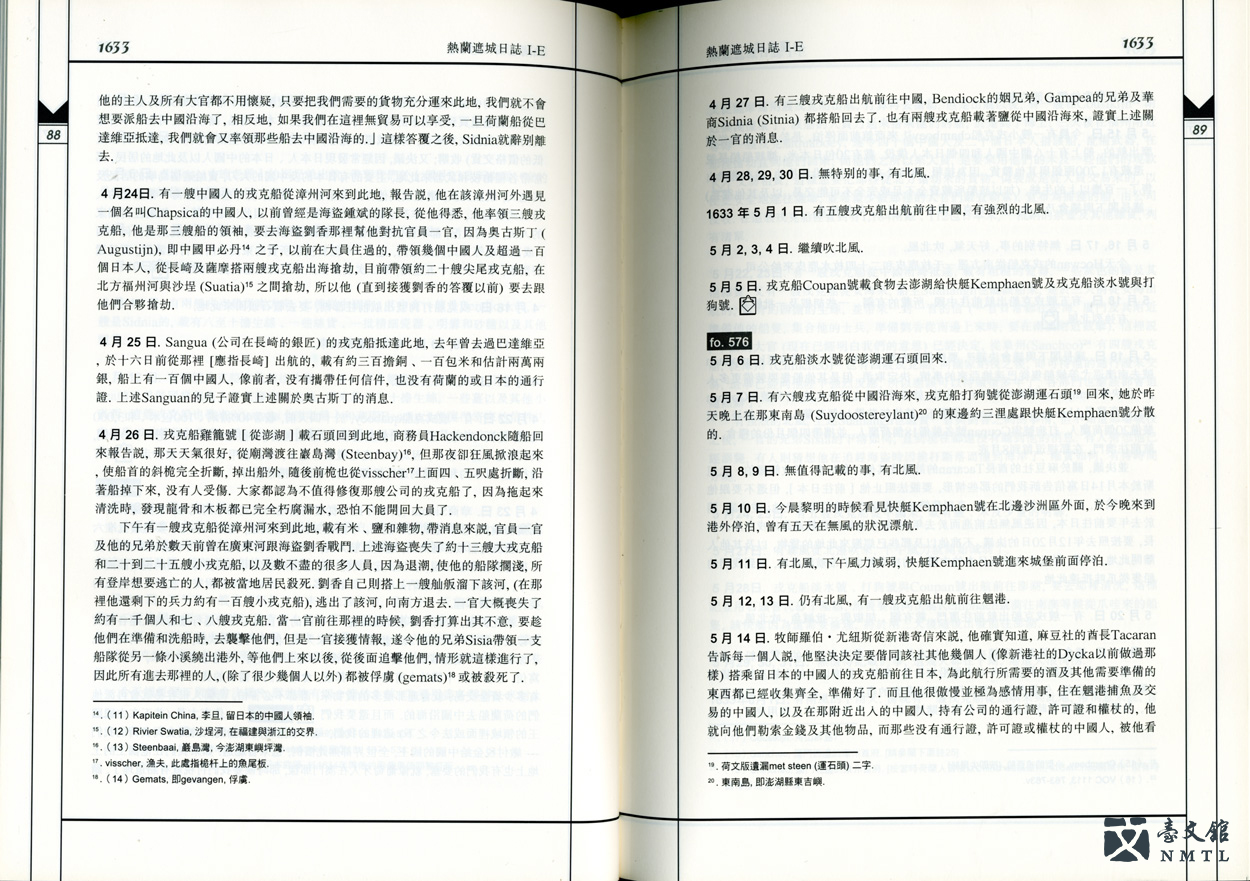
⚓︎ Diary of Fort Zeelandia (First Book)|Translated by Jiang Shu-Sheng; published by Tainan City Government, 1999. From 1624 to 1662, major sections of western coastal Taiwan were colonized by the Dutch, with Fort Zeelandia (now Anping Old Fort) serving as the center of Dutch power on the island. This diary written at Fort Zeelandia features the most pages and congruity of all Dutch documents from this period. It is an important historical record on Dutch Formosa. The first book mainly depicts how the VOC (East India Company) traded with China and how it colonized Taiwan. The entries from April 1633 contain observations of Chinese junk ships sailing to Taiwan and interactions between Dutch missionaries and indigenous people of the Madou Tribe. (Collection of the National Museum of Taiwan Literature)
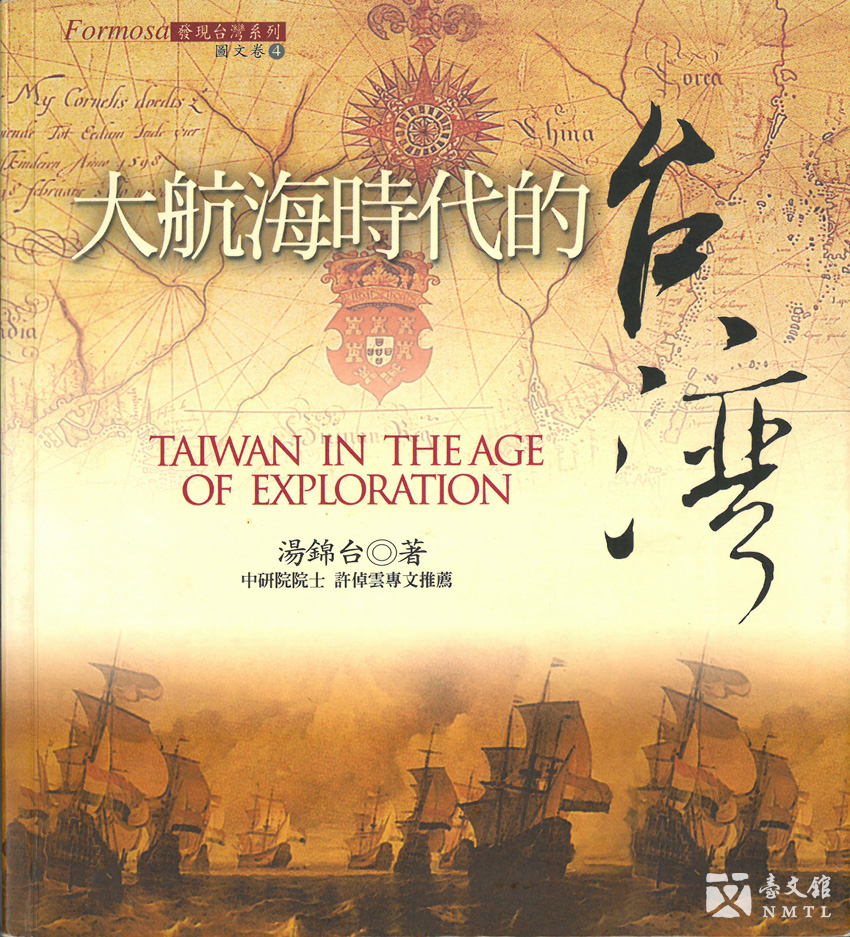
⚓︎ TAIWAN IN THE ERA OF EXPLORATION|Written by Tang Jing-Tai; published by Owl Publishing House, December 2001. This book depicts Taiwan's entry into the early modern period amidst colonial competition among European countries and the heroic adventures in the 17th century. (Donated by Li Bao-Wen)
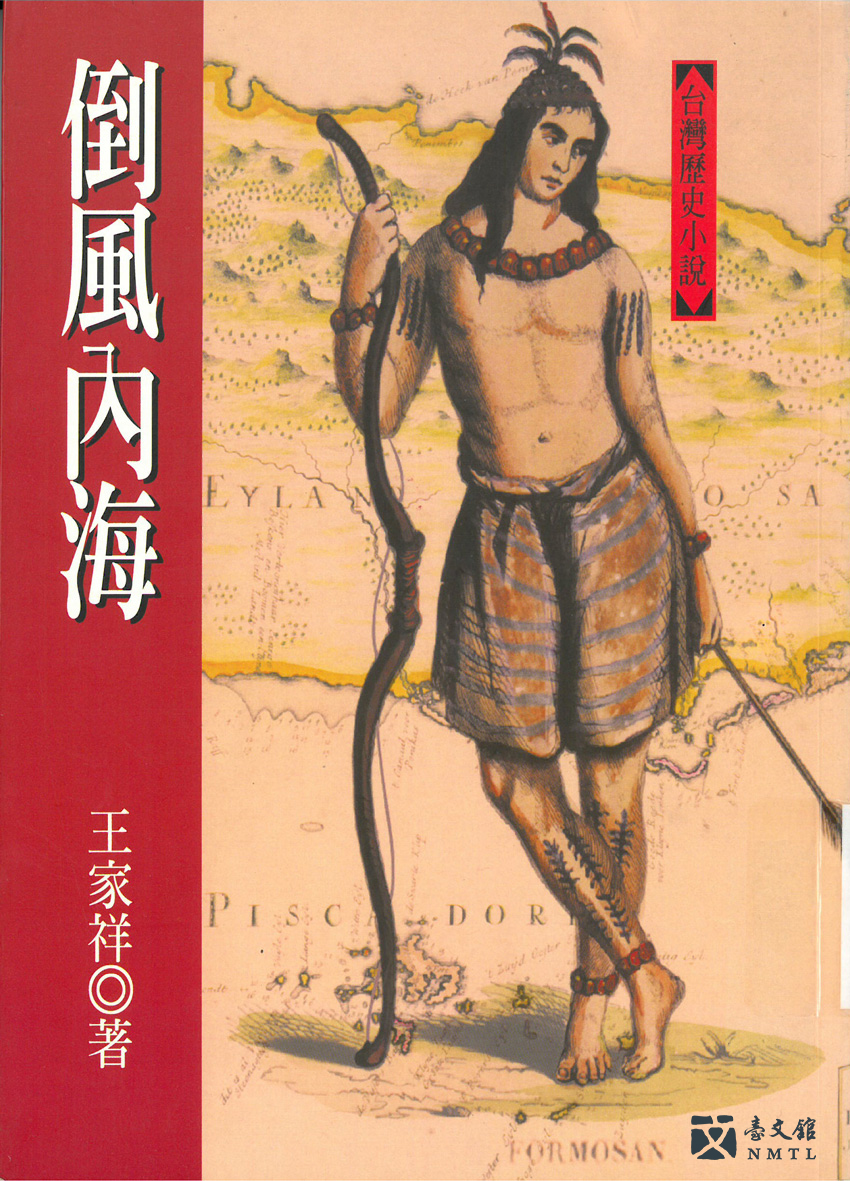
⚓︎ WINDBLOWN INNER SEA|Written by Wang Jia-Xiang and published by Taiwan Interminds, October 1997. This novel is set against the backdrop of the Madou Tribe. It describes the daily lives of the Siraya and Dutch on the Chiayi–Tainan Plain four centuries ago as well as the cultural encounters and conflicts between the Siraya and the Han Chinese emigrants. This period marks the beginning of Taiwan's entry into the period of colonization from the sea. Collection of the National Museum of Taiwan Literature


The Experience of Taiwan Strait
During the Qing Dynasty (1644-1911), a ban on travel to Taiwan was imposed largely to prevent residents of coastal China from homesteading in Taiwan. Under this policy, migrants could only illegally travel to Taiwan as stowaways in search of a better life. Thus, in the 18th and 19th centuries, numerous shipwrecks happened in the Taiwan Strait. In addition, soldiers and officials came to Taiwan from China to quell unrest. Qing literati also arrived surreptitiously in Taiwan by sea. Thus, imaginings on and appreciation of the ocean flow through Taiwan's classical literature.
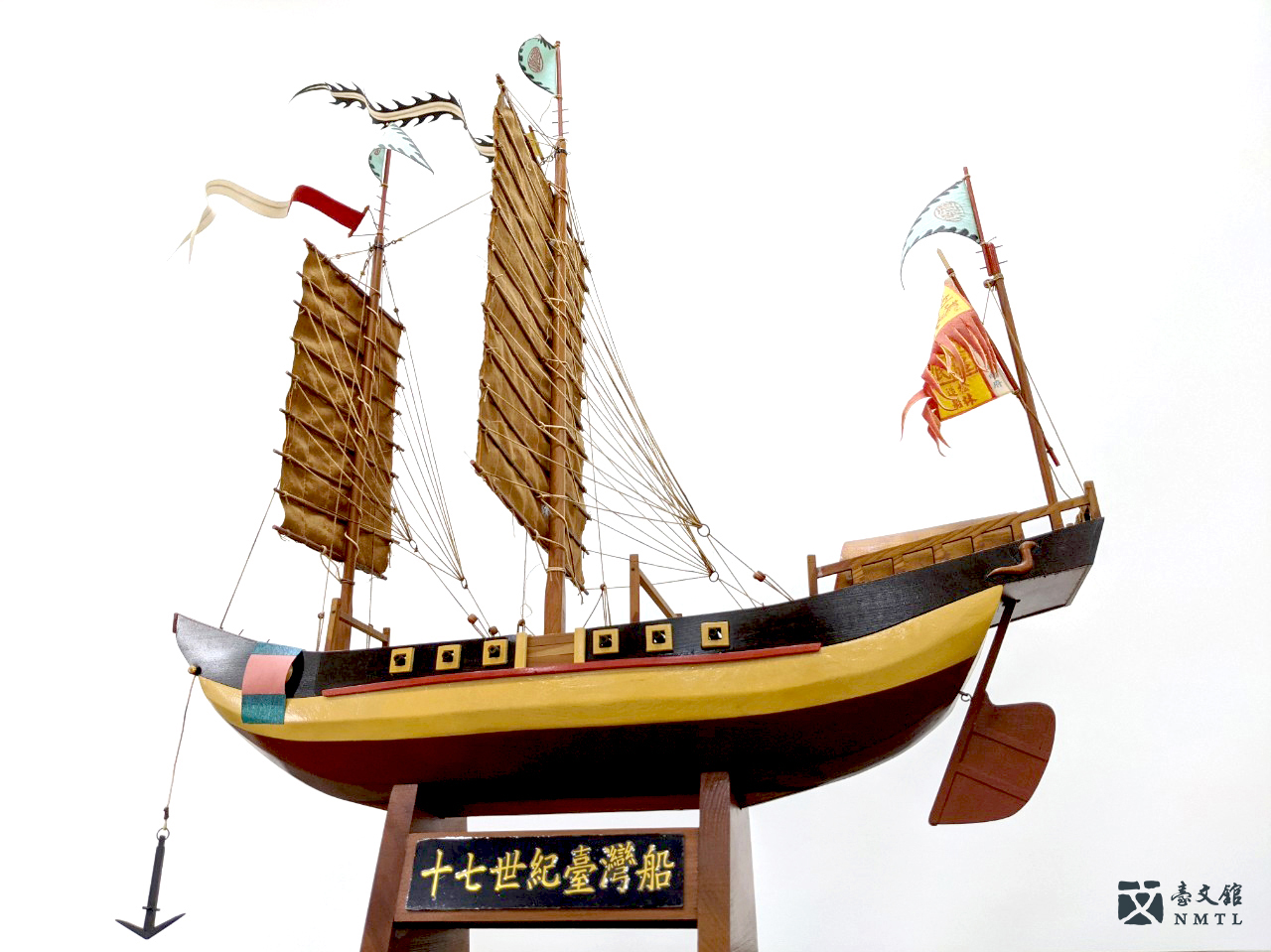
⚓︎ Model of a "Taiwan" Vessel|During the Ming and Qing Period, Chinese fu ships arrived from Fujian Province as trading, transportation, and combat vessels. So-called Taiwan ships were commercial ships that sailed among Taiwan, Fujian Province, and Japan during the Ming and Qing Period. Taiwan ships measured 30m long, 7.5m wide, and 27m in height. (Lent by Tainan Municiple Administration of Cultural Heritage)
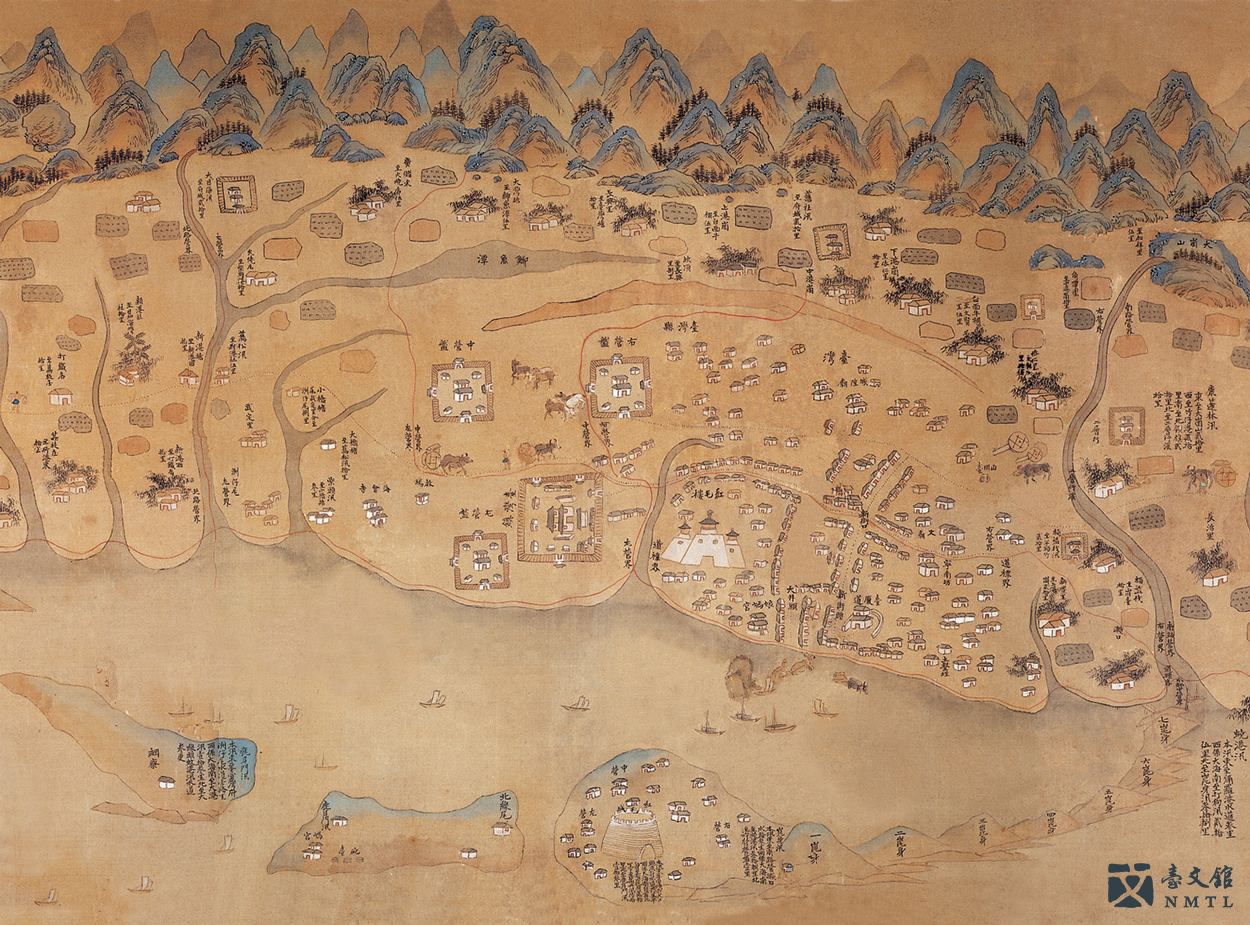
⚓︎ Important national historical object (facsimile): MAP OF TAIWAN DURING THE KANGXI PERIOD (Tainan Area)|This oldest-known Chinese map of Taiwan was published in the late 1600s – early 1700s. The map was drawn from the perspective of the Taiwan Strait looking inland over Taiwan Island. This section of the map focuses in on an area that is now modern-day Tainan. (Lent by the National Taiwan Museum)
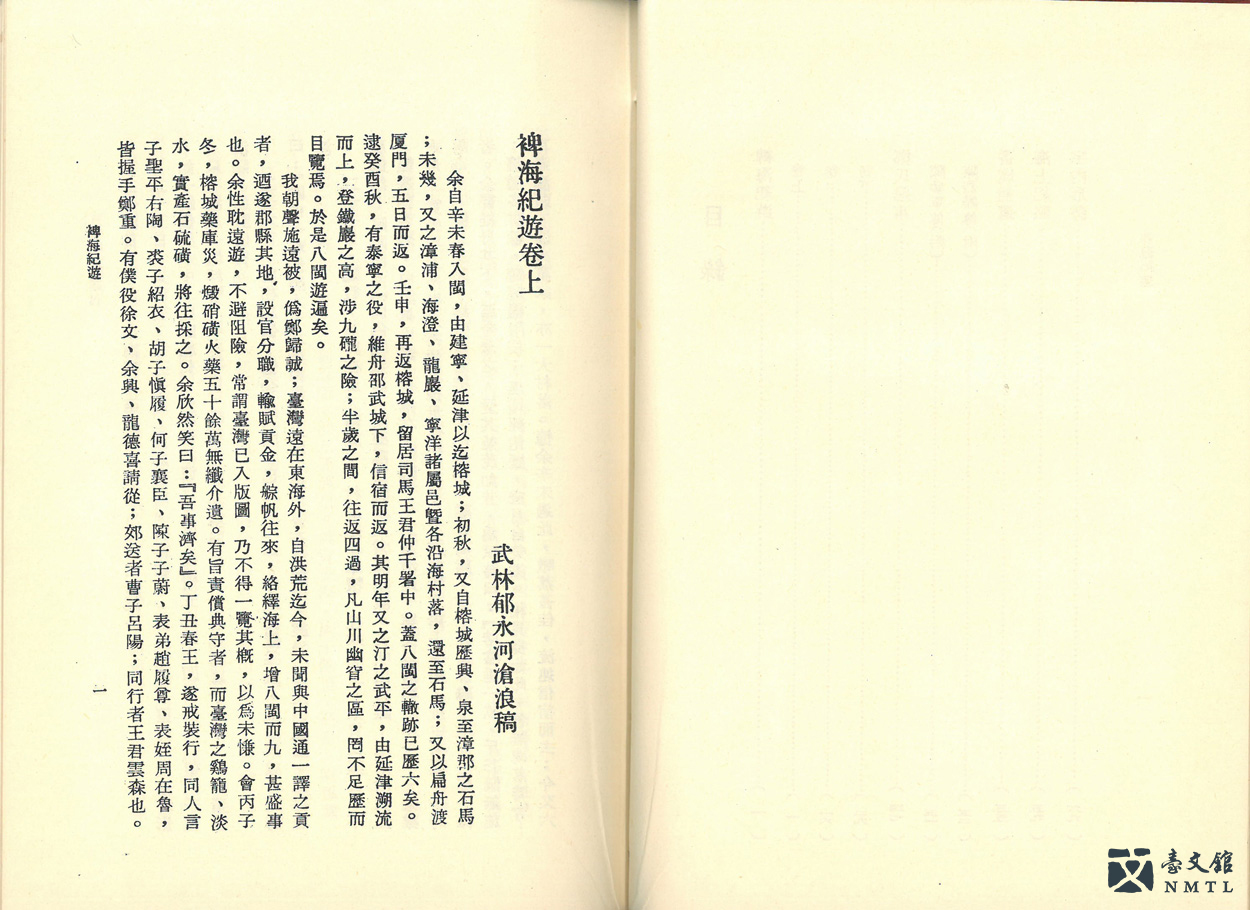
⚓︎ SMALL SEA TRAVEL DIARIES: YU YONGHE'S RECORDS OF TAIWAN|In 1697, Yu Yonghe came to Taiwan from Fuzhou in Fujian Province. He wrote this work during his travels through Keelung and Tamsui in search of sulphur mines. The book says: "Among all of the waterways in Taiwan, the Black Ditch is the most dangerous. It flows from the north to the south without a specific source. The sea water should be green, and yet the water of the Black Ditch is as black as ink. Due to its depth, it is called the Black Ditch. " Written by Yu Yong-He and published by JW Books in March 1979. (Collection of the National Museum of Taiwan Literature)
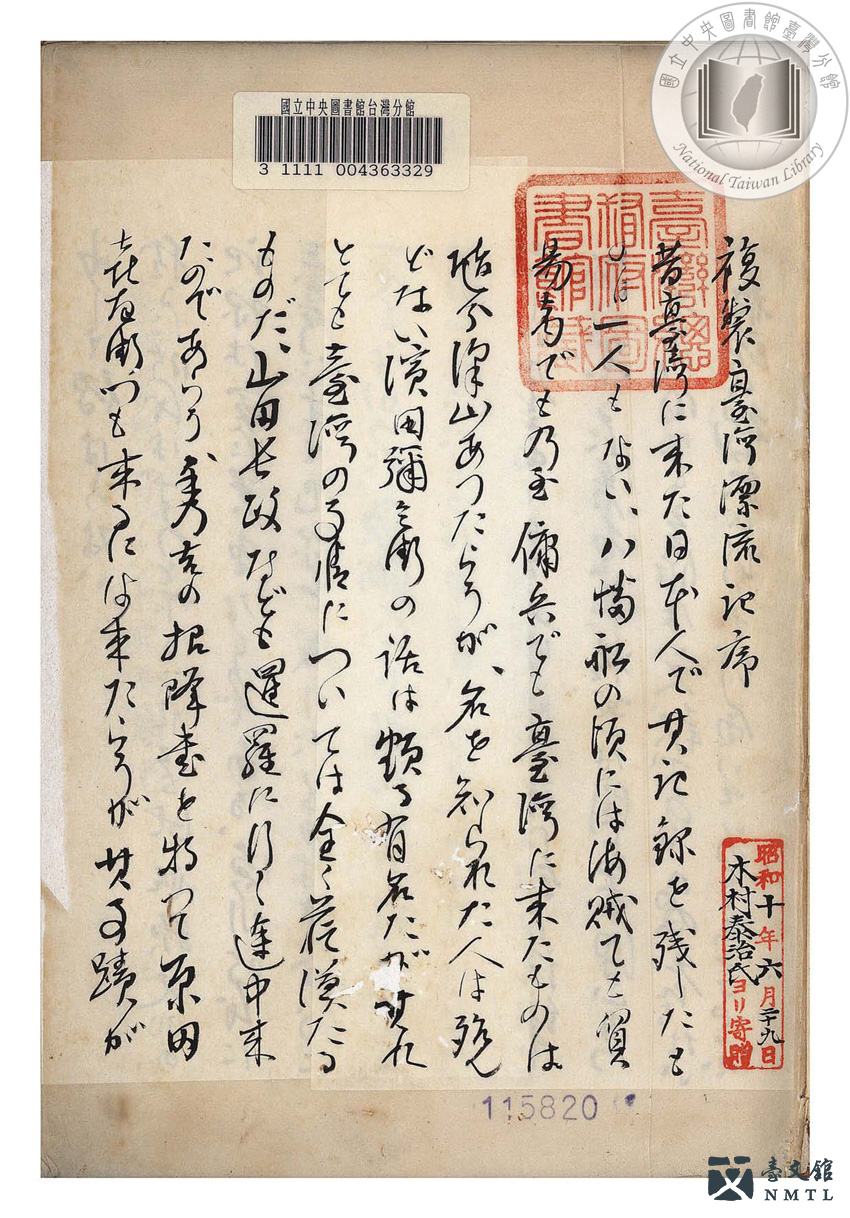
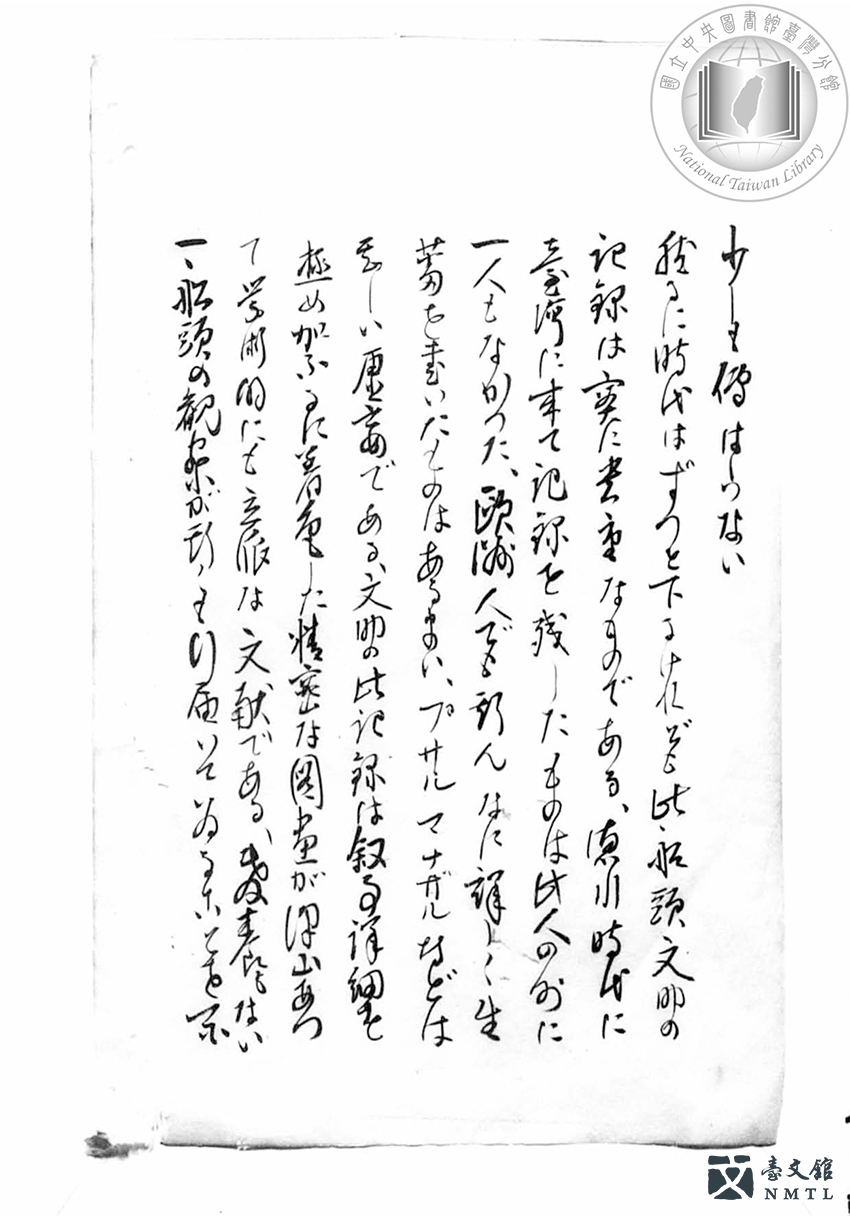
⚓︎ "Drifting to Chopuran Island in 1803"|In late 1802, a ship carrying Japanese passengers from Hakodate in Hokkaido to Edo (modern-day Tokyo) was blown off course, finally making landfall at the mouth of the Xiuguluan River in Hualien, Taiwan. Kawakita version. Hand-written and sewn-bound. (Collection of the National Taiwan Library)
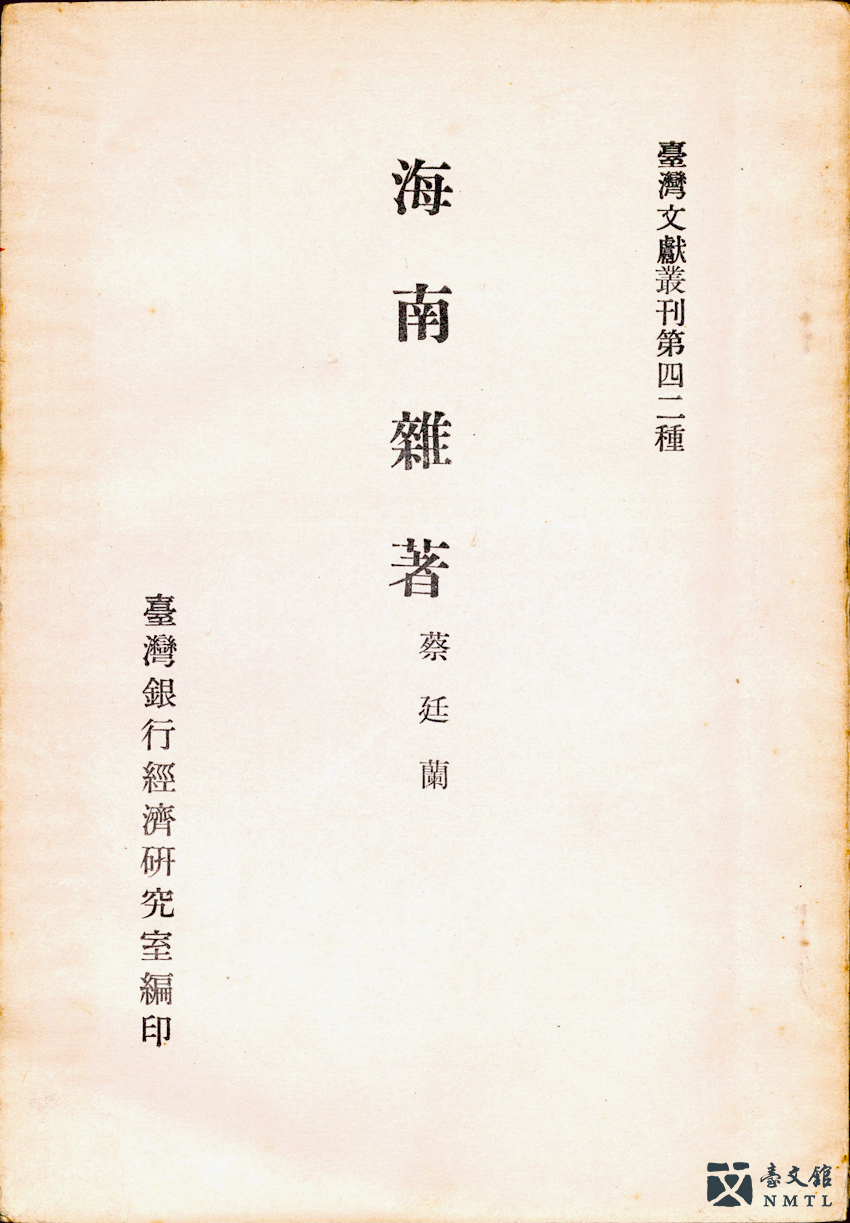
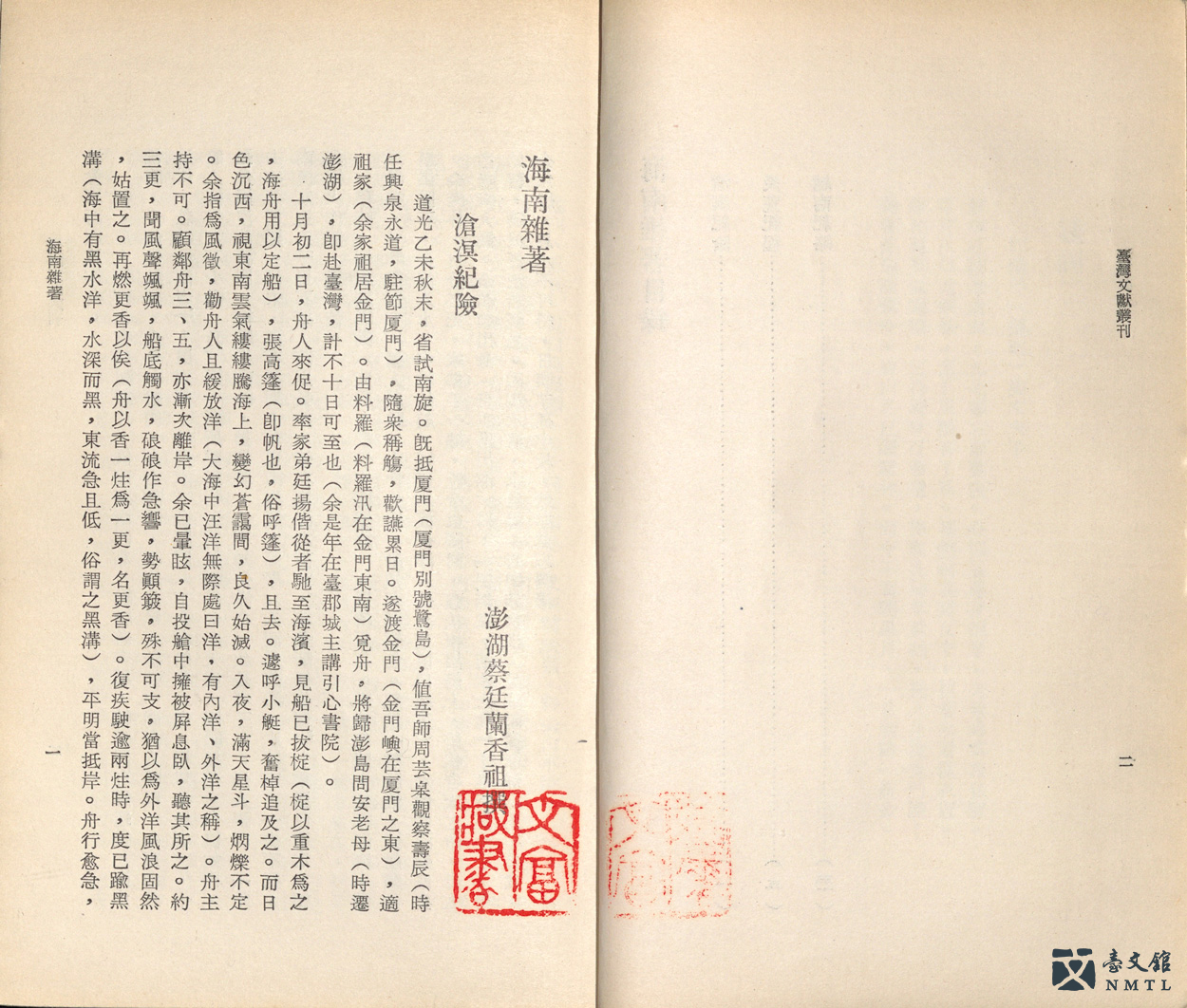
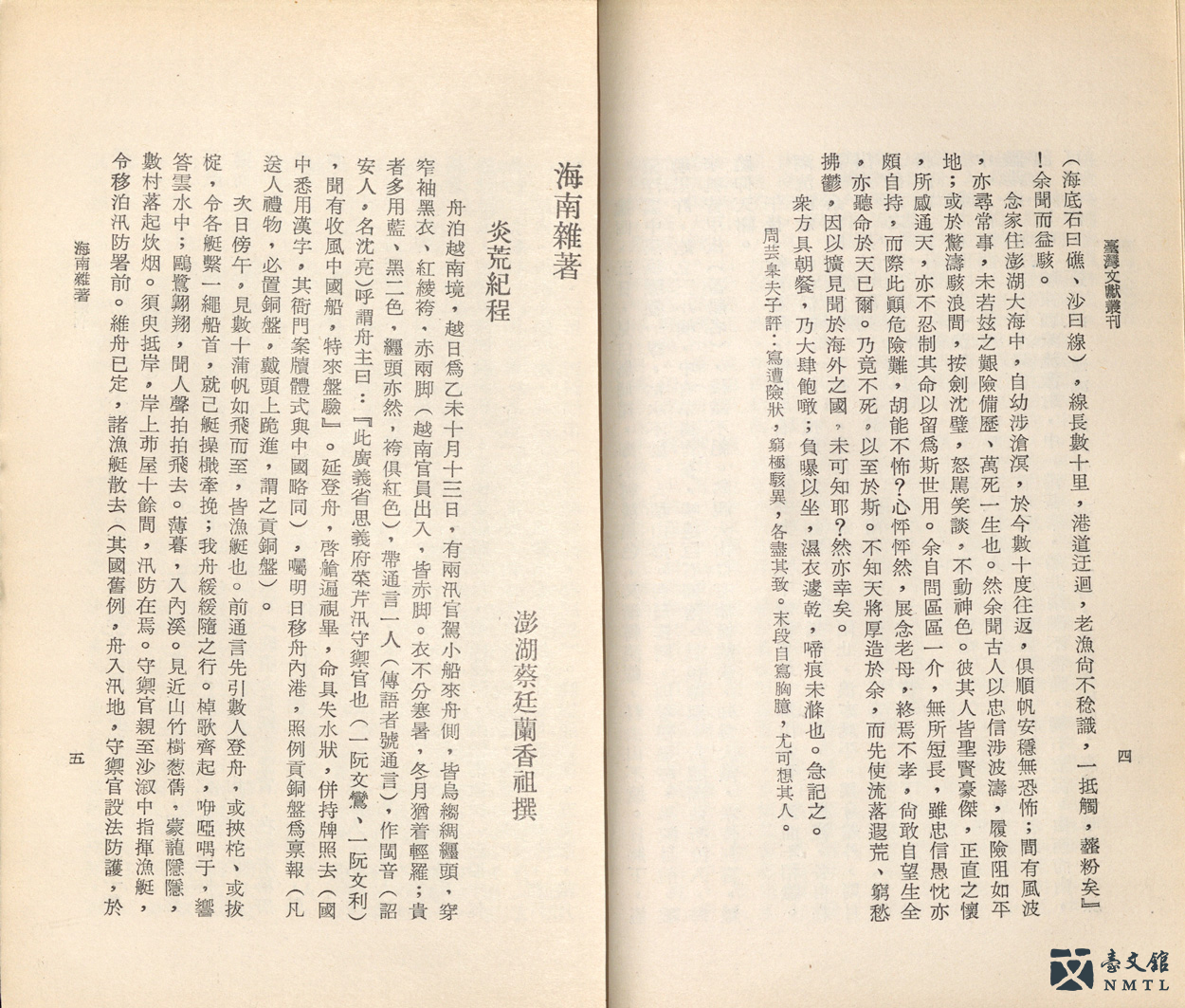
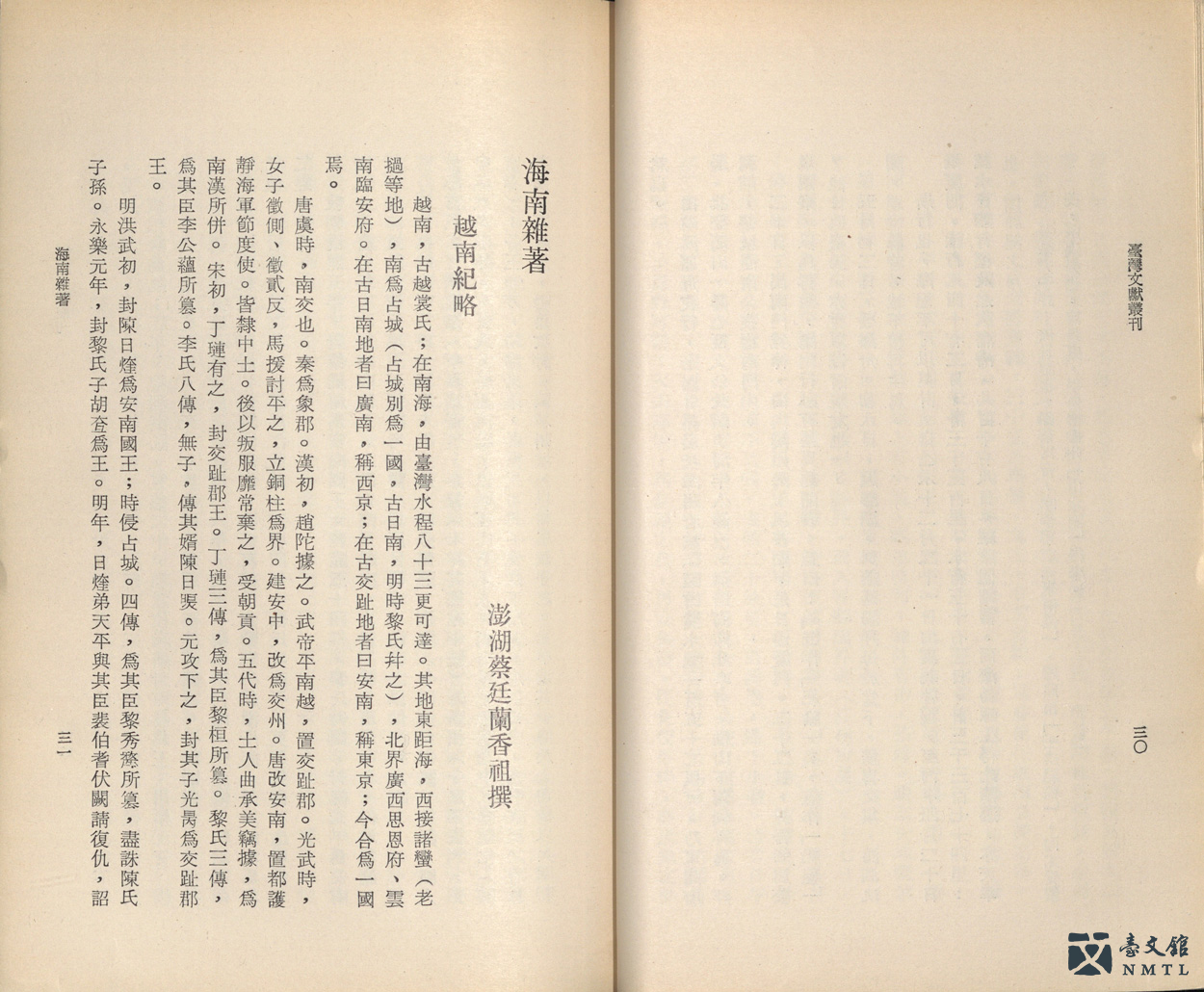
⚓︎ MISCELLANEOUS STORIES OF HAINAN|Cai Ting-Lan (1801-1859), aka Xiangzu. Born in Penghu Prefecture, Taiwan. He was Penghu's only Jinshi (highest degree in the imperial exam system) during the Qing Dynasty. His works include MISCELLANEOUS STORIES OF HAINAN and POEMS BY XIANGZU. MISCELLANEOUS STORIES OF HAINAN has been translated into multiple languages, including French, Japanese, and Vietnamese. It was the only traditional chronicle of Taiwan published. This copy was published by Bank of Taiwan Economic Research Office. (From the National Museum of Taiwan Literature permanent collection / Donated by Hsu Bing-Ding)
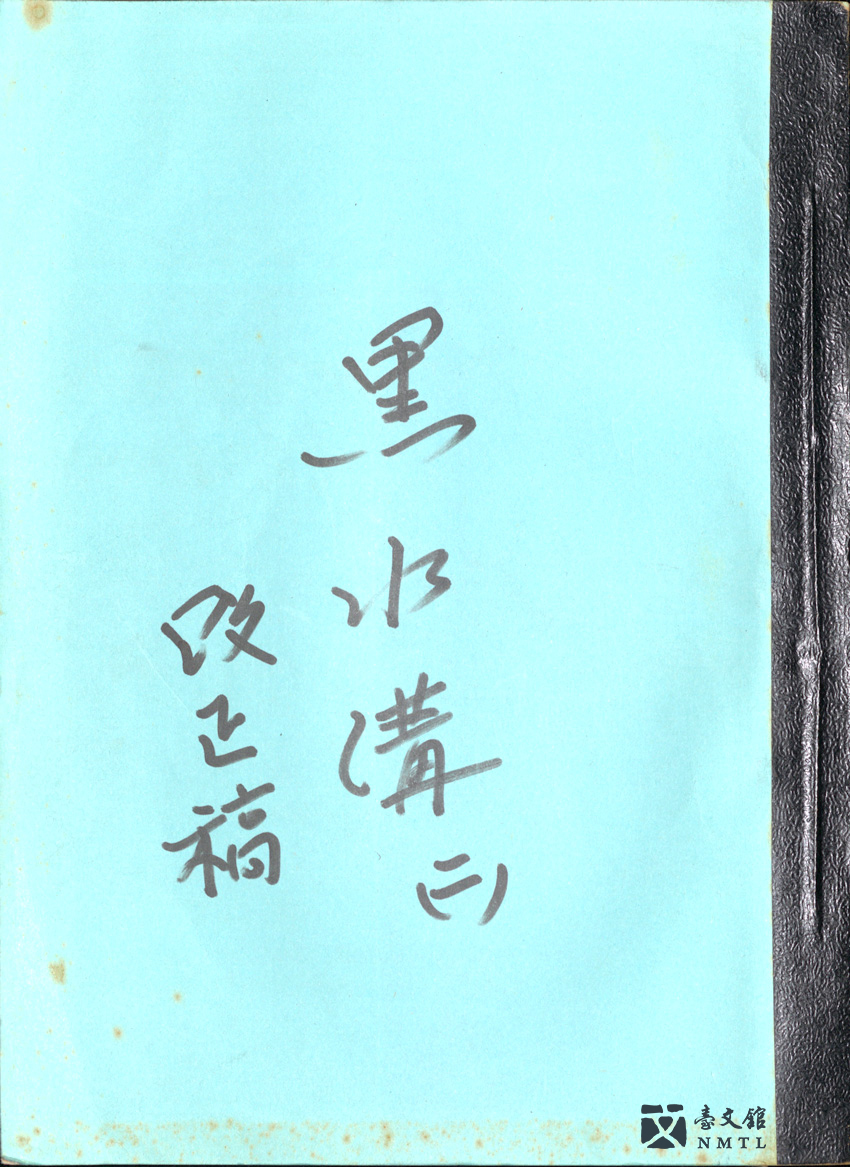
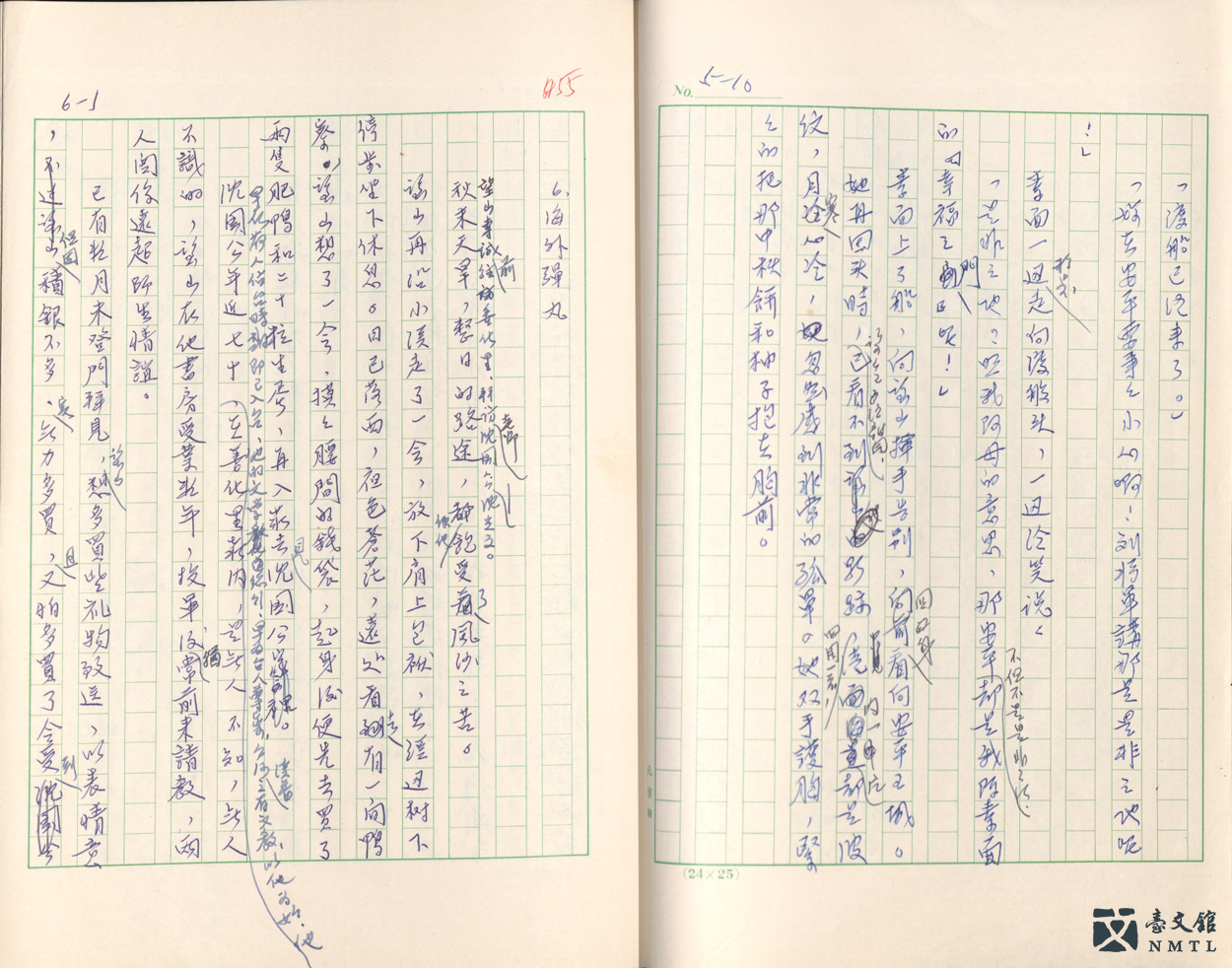
⚓︎ Manuscript of "Black Ditch"|Written by Yao Chia-Wen. Revised manuscript of TAIWAN SEVEN COLOR NOTE: BLACK DITCH. This is chapter 6-1 on Foreign Bullets. It was written on August 16th, 1983. (From the National Museum of Taiwan Literature permanent collection / Donated by Yao Chia-Wen)
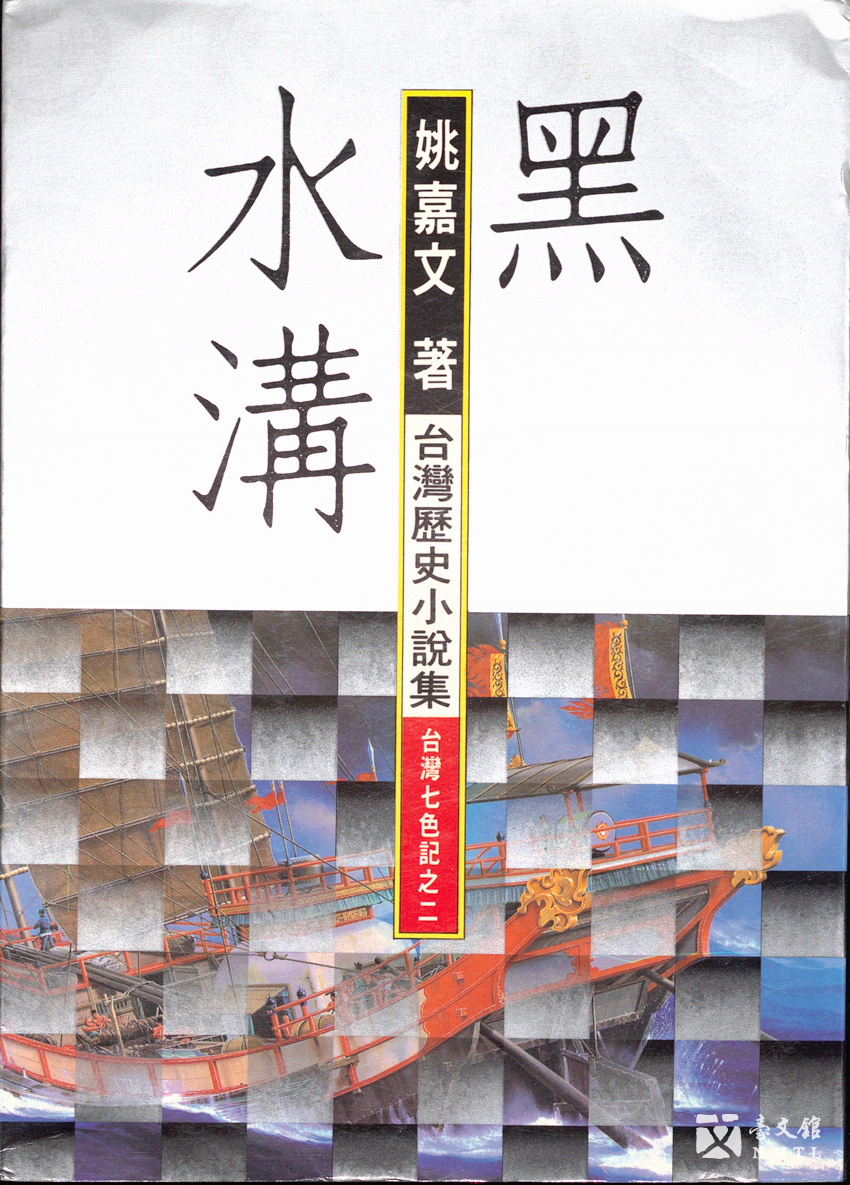
⚓︎ BLACK DITCH|Written by Yao Chia-Wen. One of the seven volumes of Yao's historical novel TAIWAN SEVEN COLOR NOTE. This novel illustrates history of Taiwan from 383 AD to 1984, spanning a period of over 1,600 years. It is considered one of the most systematic historical novels of Taiwan. Published by Independence Evening Post in May 1987. (From the National Museum of Taiwan Literature permanent collection / Donated by Li Kui-Xian)
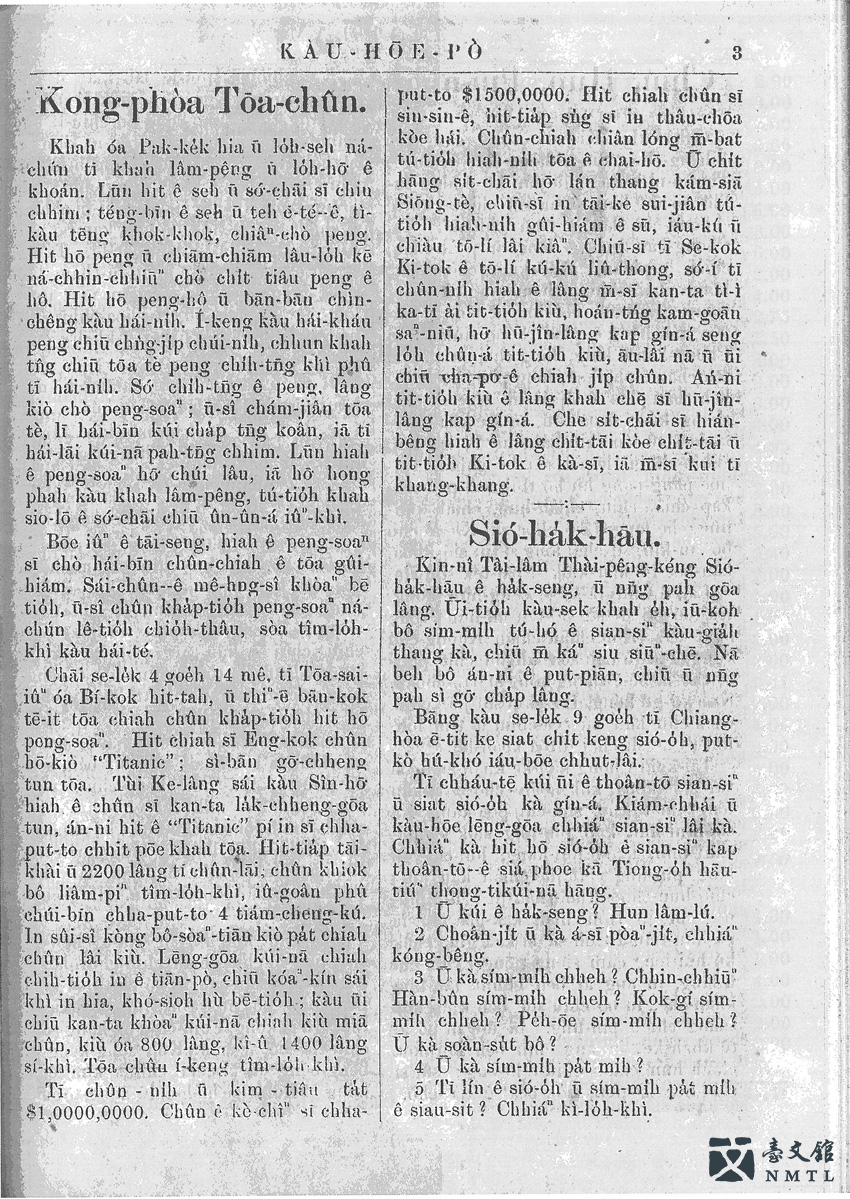
⚓︎〈Kong-pòa Tōa-chûn〉"Wreck of A Big Ship"|Page 3 of Vol. 327 of TAINAN CHURCH NEWS (June 1912). Written in plain Taiwanese, this article describes the sinking the British liner Titanic after hitting an iceberg during its maiden voyage in April 1912. This is the digital version of Vol. 5 in the Complete Collection of the Taiwan Church News. (Collection of the National Museum of Taiwan Literature)
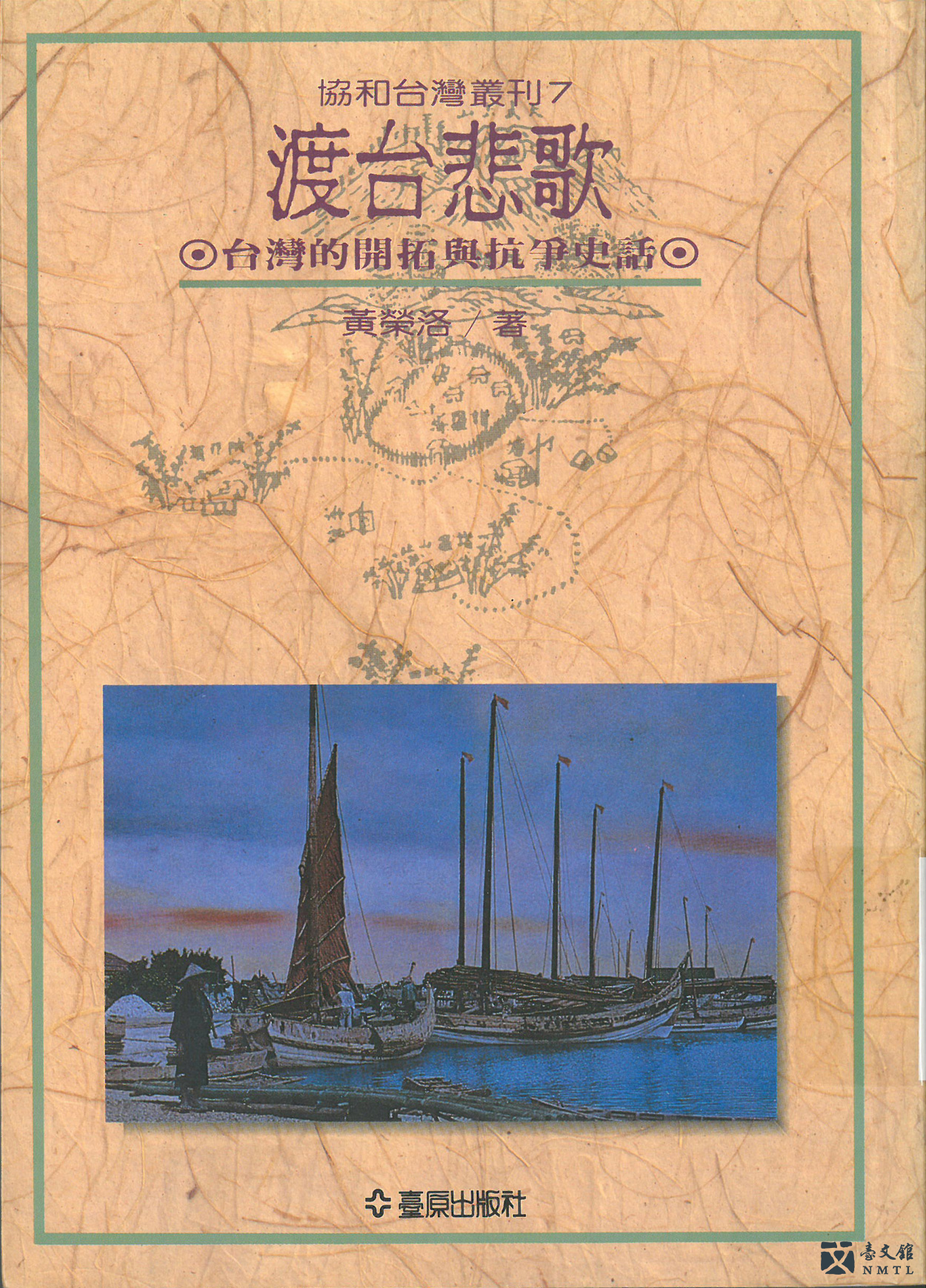
⚓︎ TRAGIC IMMIGRATION STORIES: EXPLORATION OF TAIWAN AND STORIES OF FIGHTING INJUSTICE|The Hakka people's experience in crossing the Taiwan Strait is depicted in TRAGIC IMMIGRATION STORIES: "Do not go across the sea to Taiwan because it is like the door to hell. Thousands of people have tried to go there without returning, and living there will be tough." The Taiwan Strait posed a significant challenge to the Han Chinese wanting to emigrate to Taiwan. Written by Huang Jung-Lo. Published by Taiyuan Publishing House in July 1989. (Collection of the National Museum of Taiwan Literature)


The Imprisoned Coastline
After the Second World War, the ocean surrounding Taiwan was a forbidden zone through four long decades of martial law. In the 1960s and 1970s, poets working in the navy had the most maritime experience. Thus, their literary works about the ocean became the foundation of Taiwan's postwar maritime literature.
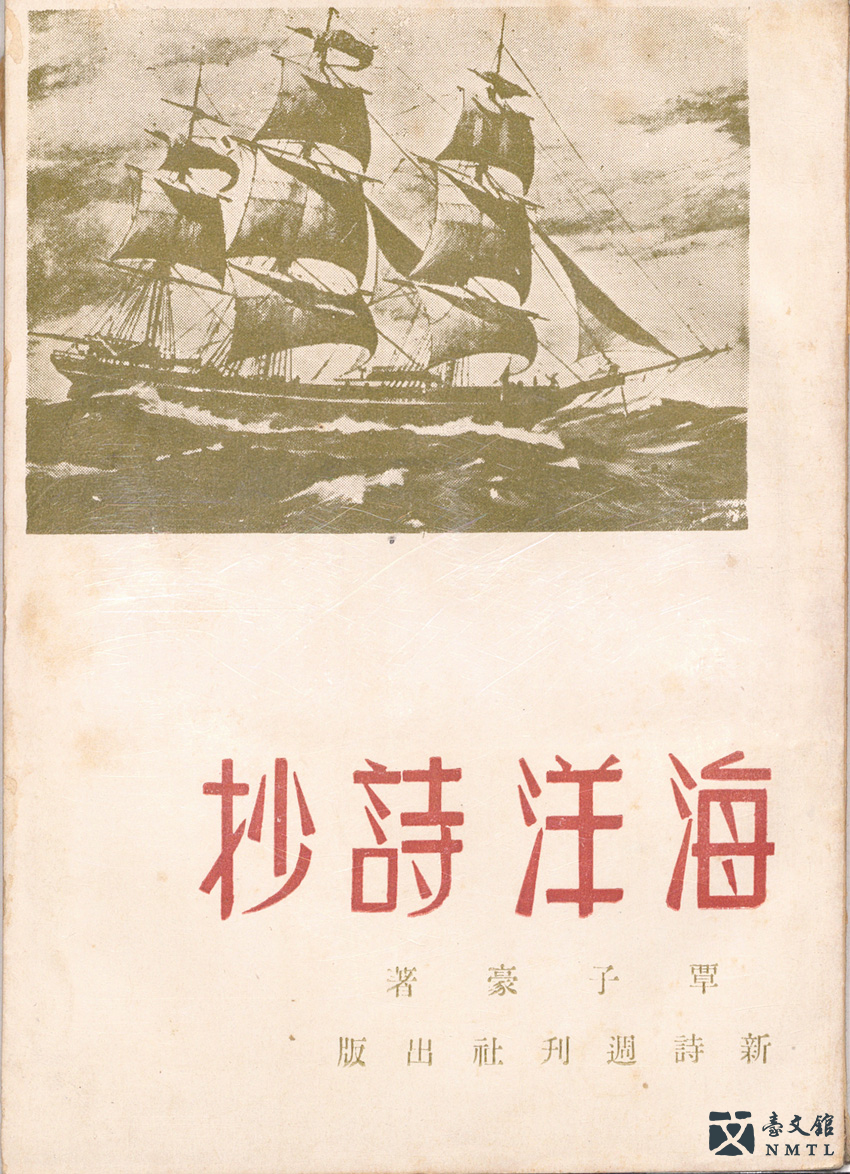
⚓︎ POEMS OF THE SEA|Written by Chin Tzu-Hao, this is the first postwar ocean-themed collection of poetry. Published by New Poetry Magazine in April 1953. (From the National Museum of Taiwan Literature permanent collection / Donated by Chen Qi-Mao and Ding Zhen-Wan)
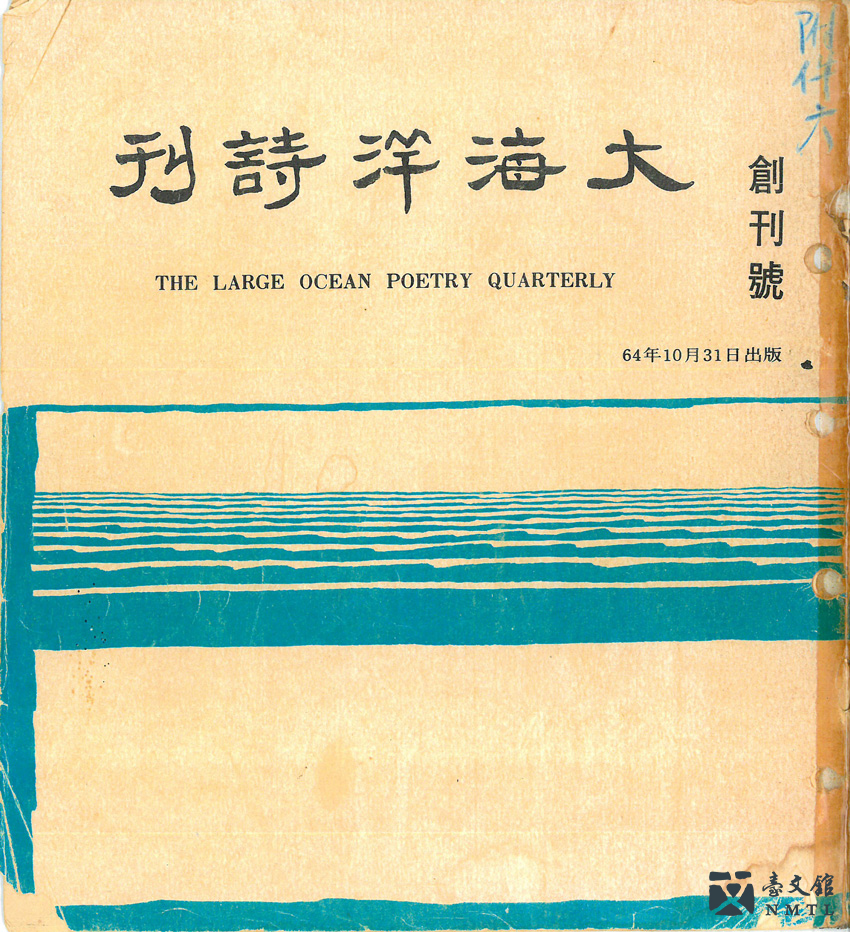
⚓︎ First Issue of BIG OCEAN POETRY MAGAZINE|Chu Hsueh-Shu and Wang Qi-Jiang founded "The Big Ocean Poetry Society" in 1975 while working in the navy. This society published THE BIG OCEAN POETRY MAGAZINE. In the foreword of the first issue, Chu Hsueh-Shu wrote: "Exploring the new realms of maritime literature" to express the organization's mission to explore maritime literature and contribute to the history of maritime literature in the Chinese-speaking world. The society was one of the few literary organizations to focus on the ocean during Taiwan's Martial Law Period. THE BIG OCEAN POETRY MAGAZINE was the earliest postwar literary magazine dedicated to maritime literature. The magazine was founded in October 1975 in Kaohsiung by The Big Ocean Poetry Society. (Lent by Chu Hsueh-Shu)
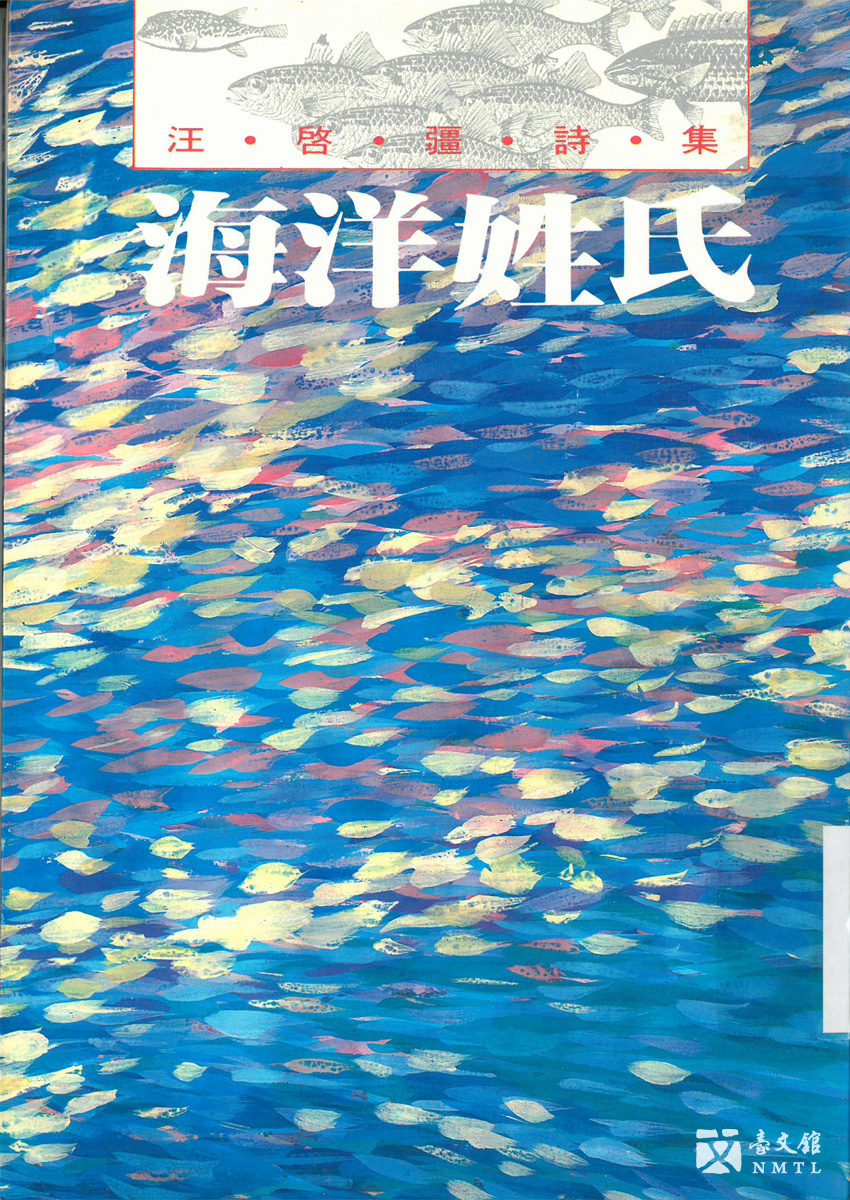
⚓︎ OCEAN NAMES|Written by Wang Qi-Jiang. The book features more than 40 of Wang's poems on the sea written between 1971 and 1986. Published by Shangshu Cultural Publishing House, June 1990. (Collection of the National Museum of Taiwan Literature)


